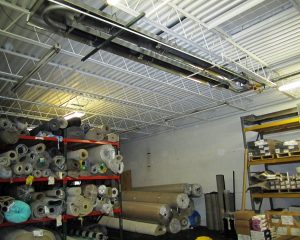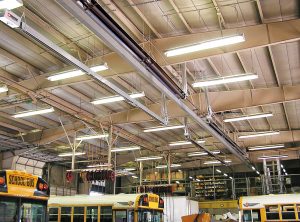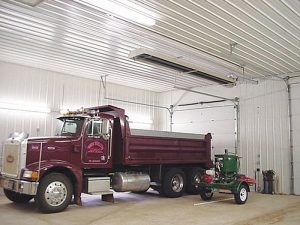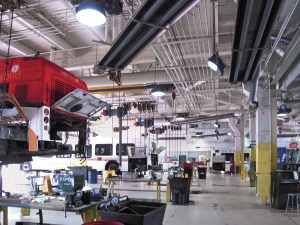ETS Series
| MODEL | INPUT BTU/HR | MINIMUM MOUNTING HEIGHT |
| ETS40 | 40,000 | 10′ |
| ETS50 | 50,000 | 11′ |
| ETS60 | 60,000 | 12′ |
| ETS75 | 75,000 | 13′ |
| ETS80 | 80,000 | 13′ |
| ETS90 | 90,000 | 13′ |
| ETS100 | 100,000 | 14′ |
| ETS110 | 110,000 | 14′ |
| ETS120 | 120,000 | 14′ |
| ETS125 | 125,000 | 14′ |
| ETS130 | 130,000 | 15′ |
| ETS140 | 140,000 | 15′ |
| ETS150 | 150,000 | 15′ |
| ETS160 | 160,000 | 16′ |
| ETS175 | 175,000 | 16′ |
| ETS180 | 180,000 | 18′ |
| ETS200 | 200,000 | 18′ |
| ETS225 | 225,000 | 20′ |
| ETS250 | 250,000 | 20′ |
* Indicate model number based on Btu/hr input (e.g. ETS Btu/hr), emitter length (e.g. 30 ft.) . Control suffix (e.g. Natural Gas single stage input ) . The unit selection would be ETS100-30-N5. See Dimensions Tab for all allowable Emitter Tube Lengths.
** Minimum recommended mounting heights are intended as a guide only, as heaters may be mounted at various heights and angles. Mount heaters as high as possible. Minimums are shown as a guideline for human comfort and uniform energy distribution for complete building applications. Please consult your Space-Ray Representative for a detailed analysis of your particular heating requirements.
| Control Suffix | Type of Gas | Control Option Description | |||||
| N5 | Natural | Single Stage Gas Valve – Single Stage Input | |||||
| L5 | Propane | Single Stage Gas Valve – Single Stage Input | |||||
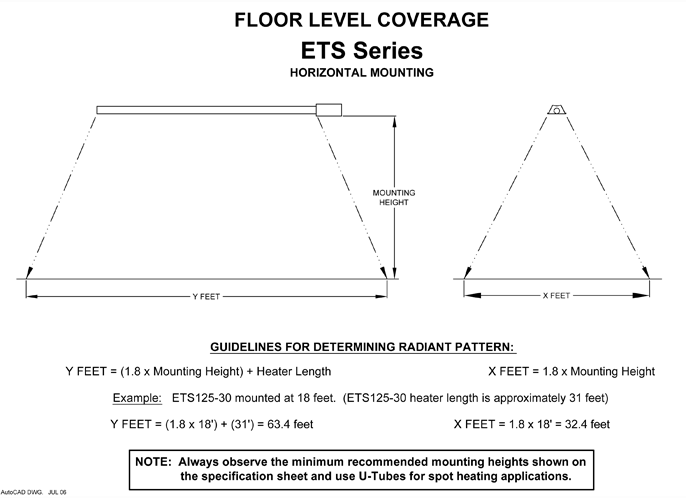
ETU Series
| MODEL | INPUT BTU/HR | MINIMUM MOUNTING HEIGHT |
|
ETU40
|
40,000 | 10′ |
|
ETU50
|
50,000 | 11′ |
|
ETU60
|
60,000 | 12′ |
|
ETU75
|
75,000 | 13′ |
|
ETU80
|
80,000 | 13′ |
|
ETU90
|
90,000 | 13′ |
|
ETU100
|
100,000 | 14′ |
|
ETU110
|
110,000 | 14′ |
|
ETU120
|
120,000 | 14′ |
|
ETU125
|
125,000 | 14′ |
|
ETU130
|
130,000 | 15′ |
|
ETU140
|
140,000 | 15′ |
|
ETU150
|
150,000 | 15′ |
|
ETU160
|
160,000 | 16′ |
|
ETU175
|
175,000 | 16′ |
|
ETU180
|
180,000 | 18′ |
|
ETU200
|
200,000 | 18′ |
|
ETU225
|
225,000 | 20′ |
|
ETU250
|
250,000 | 20′ |
* Indicate model number based on Btu/hr input (e.g. 100,000 Btu/hr), emitter length (e.g. 30 ft.) . Control suffix (e.g. Natural Gas single stage input ) . The unit selection would be ETU100-30-N5. See Dimensions Tab for all allowable Emitter Tube Lengths.
** Minimum recommended mounting heights are intended as a guide only, as heaters may be mounted at various heights and angles. Mount heaters as high as possible. Minimums are shown as a guideline for human comfort and uniform energy distribution for complete building applications. Please consult your Space-Ray Representative for a detailed analysis of your particular heating requirements.
| Control Suffix | Type of Gas | Control Option Description | |||||
| N5 | Natural | Single Stage Gas Valve – Single Stage Input | |||||
| L5 | Propane | Single Stage Gas Valve – Single Stage Input | |||||
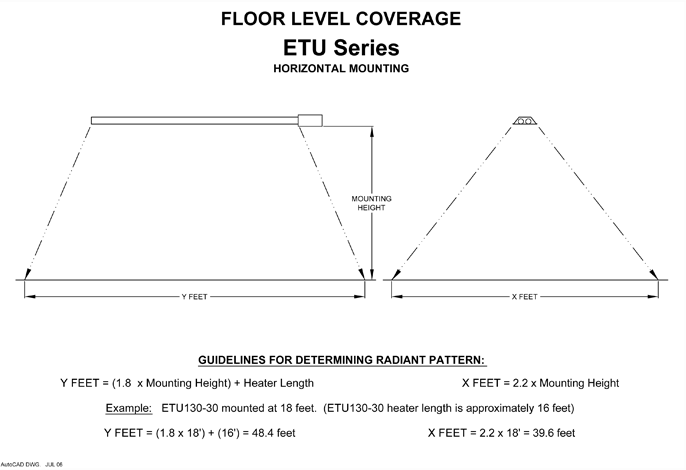
Floor Level Coverage – The above chart may be used as a guideline for primary radiation, i.e. the infrared pattern directly below the heater. In a well-insulated building, only 50% of the floor needs to be covered by the primary radiant pattern. Please be aware that the radiant energy generated by infrared heaters is not limited to the primary radiant pattern. There is additional radiant energy that is absorbed outside the primary area, a secondary radiant pattern. Since concrete is a very good conductor of heat, a reasonably uniform floor temperature eventually will be reached. The amount of time it takes to reach “thermal equilibrium” is in direct correlation to the distance between the heaters.
Learn More >>
Pull-Through System (negative pressure or vacuum)
- Products of combustion are pulled through the combustion chamber for increased radiant efficiency and greater safety
- No draft hoods, totally enclosed combustion chamber
- Heavy duty draft inducer with permanently lubricated, totally enclosed, fan cooled, and heavy duty ball bearing motor for maintenance-free operation
- Draft inducer can be rotated 45 or 90 degrees for sidewall venting
- Tubes & Reflectors are bulk shipped for easy field assembly
Burner System
- Heavy duty cast iron burner 10 year limited warranty on burner
- Inside or optional outside air for combustion
- Up to 50 ft. outside combustion air duct capability
- Standard 6″ combustion air duct opening
- Reliable direct spark ignition system and 100% Gas Shut-Off Safety Control
- 30 second pre-purge prior to ignition
- State-of-the-art step opening redundant combination gas valve for quiet ignition and added safety
- Diaphragm air switch for proof of venting before gas flow and ignition
- Diagnostic Monitoring Light system
- Burner inspection sight glass
- 36″ Stainless Steel flexible gas connector included with control box
Radiant Emitter Tube System
- 4″ O.D. heavy duty calorized aluminized steel combustion chamber (10 feet) and heavy duty hot-rolled steel emitter tubes
- Optional calorized aluminized steel (ALC Option) radiant emitter tubes
- 3 year limited warranty on the emitter tubes
- Suitable for horizontal or angle mounting up to 45 degrees
- Optional 90° elbows
- Up to 75 feet sidewall vent capability
- 4″ O.D. flue connection for ETS/U 40-175; 6″ for ETS/U180-250
- Optional 5′ or 10′ body extension packages
- ALC Option: All Calorized Aluminized steel (ALC) radiant emitter tubes– for ALC Option the model number would be ETS100-40-ALC-N5. Note: for Dairy Barns, Greenhouses, Swimming Pools, Waste Water Treatment Plants, and other high humidity/corrosive environments, ALC option with all calorized aluminized tubes is recommended. Calorized aluminized steel emitter tubes provide long life, corrosion resistance, and high radiant efficiency — will not flake or peel. Ideal for high humidity/corrosive environments. Learn More about Calorized Aluminized Steel Emitter Tubes (PDF)
Reflector System
- Highly efficient aluminum reflectors with reflectivity rating of 97.5%
- Optional end, corner, side and U-bend reflectors
- Optional decorative grille
- Individual reflectors can be rotated up to 45° to direct heat where needed
- Easy-to-use mounting brackets & wire hangers
Other
- CSA Certified according to ANSI Z83.20 and CSA 2.34. NOT Certified for Residential Use
| MODEL | INPUT BTU/HR | TOTAL TUBE LENGTH (FT) |
OVERALL DIMENSION “L” (FT) |
REFLECTOR WIDTH “W” (IN) |
REFLECTOR HEIGHT “H” (IN) |
SHIPPING WEIGHT Lbs.** |
| ETS40-15 | 40,000 | 15′ | 17′ 9″ | 13″ | 7″ | 96 |
| ETS50-15 | 50,000 | 15′ | 17’9″ | 13″ | 7″ | 96 |
| ETS40-20 | 40,000 | 20′ | 22’9″ | 13″ | 7″ | 126 |
| ETS50-20 | 50,000 | 20′ | 22’9″ | 13″ | 7″ | 126 |
| ETS60-20 | 60,000 | 20′ | 22’9″ | 13″ | 7″ | 126 |
| ETS75-20 | 75,000 | 20′ | 22’9″ | 13″ | 7″ | 126 |
| ETS50-30 | 50,000 | 30′ | 32’9″ | 13″ | 7″ | 162 |
| ETS60-30 | 60,000 | 30′ | 32’9″ | 13″ | 7″ | 165 |
| ETS75-30 | 75,000 | 30′ | 32’9″ | 13″ | 7″ | 162 |
| ETS80-30 | 80,000 | 30′ | 32’9″ | 13″ | 7″ | 162 |
| ETS90-30 | 90,000 | 30′ | 32’9″ | 13″ | 7″ | 162 |
| ETS100-30 | 100,000 | 30′ | 32’9″ | 13″ | 7″ | 162 |
| ETS110-30 | 110,000 | 30′ | 32’9″ | 13″ | 7″ | 162 |
| ETS120-30 | 120,000 | 30′ | 32’9″ | 13″ | 7″ | 162 |
| ETS125-30 | 125,000 | 30′ | 32’9″ | 13″ | 7″ | 162 |
| ETS130-30 | 130,000 | 30′ | 32’9″ | 13″ | 7″ | 162 |
| ETS80-40 | 80,000 | 40′ | 42’9″ | 13″ | 7″ | 198 |
| ETS90-40 | 90,000 | 40′ | 42’9″ | 13″ | 7″ | 198 |
| ETS100-40 | 100,000 | 40′ | 42’9″ | 13″ | 7″ | 198 |
| ETS110-40 | 110,000 | 40′ | 42’9″ | 13″ | 7″ | 198 |
| ETS120-40 | 120,000 | 40′ | 42’9″ | 13″ | 7″ | 198 |
| ETS125-40 | 125,000 | 40′ | 42’9″ | 13″ | 7″ | 198 |
| ETS130-40 | 130,000 | 40′ | 42’9″ | 13″ | 7″ | 198 |
| ETS140-40 | 140,000 | 40′ | 42’9″ | 13″ | 7″ | 198 |
| ETS150-40 | 150,000 | 40′ | 42’9″ | 13″ | 7″ | 198 |
| ETS160-40 | 160,000 | 40′ | 42’9″ | 13″ | 7″ | 198 |
| ETS175-40 | 175,000 | 40′ | 42’9″ | 13″ | 7″ | 198 |
| ETS125-50 | 125,000 | 50′ | 52’9″ | 13″ | 7″ | 234 |
| ETS130-50 | 130,000 | 50′ | 52’9″ | 13″ | 7″ | 234 |
| ETS140-50 | 140,000 | 50′ | 52’9″ | 13″ | 7″ | 234 |
| ETS150-50 | 150,000 | 50′ | 52’9″ | 13″ | 7″ | 234 |
| ETS160-50 | 160,000 | 50′ | 52’9″ | 13″ | 7″ | 234 |
| ETS175-50 | 175,000 | 50′ | 52’9″ | 13″ | 7″ | 234 |
| ETS180-50 | 180,000 | 50′ | 52’9″ | 13″ | 7″ | 234 |
| ETS200-50 | 200,000 | 50′ | 52’9″ | 13″ | 7″ | 234 |
| ETS225-50 | 225,000 | 50′ | 52’9″ | 13″ | 7″ | 234 |
| ETS250-50* | 250,000 | 50′ | 52’9″ | 13″ | 7″ | 234 |
| ETS180-60 | 180,000 | 60′ | 62’9″ | 13″ | 7″ | 288 |
| ETS200-60 | 200,000 | 60′ | 62’9″ | 13″ | 7″ | 288 |
| ETS225-60 | 225,000 | 60′ | 62’9″ | 13″ | 7″ | 288 |
| ETS250-60 | 250,000 | 60′ | 62’9″ | 13″ | 7″ | 288 |
| ETS180-70 | 180,000 | 70′ | 72’9″ | 13″ | 7″ | 324 |
| ETS200-70 | 200,000 | 70′ | 72’9″ | 13″ | 7″ | 324 |
| ETS225-70 | 225,000 | 70′ | 72’9″ | 13″ | 7″ | 324 |
| ETS250-70 | 250,000 | 70′ | 72’9″ | 13″ | 7″ | 324 |
| ETS180-80 | 180,000 | 80′ | 82’9″ | 13″ | 7″ | 360 |
| ETS200-80 | 200,000 | 80′ | 82’9″ | 13″ | 7″ | 360 |
| ETS225-80 | 225,000 | 80′ | 82’9″ | 13″ | 7″ | 360 |
| ETS250-80 | 250,000 | 80′ | 82’9″ | 13″ | 7″ | 360 |
* Unvented use
** Hanging weight is 80% of shipping weight

| MODEL | INPUT BTU/HR |
TOTAL TUBE LENGTH (FT) |
OVERALL DIMENSION “L” (FT) |
REFLECTOR WIDTH “W” (IN) |
REFLECTOR HEIGHT “H” (IN) |
SHIPPING WEIGHT Lbs.** |
| ETU40-20 | 40,000 | 20′ | 12′ 9″ | 31″ | 6″ | 146 |
| ETU50-20 | 50,000 | 20′ | 12′ 9″ | 31″ | 6″ | 146 |
| ETU60-20 | 60,000 | 20′ | 12′ 9″ | 31″ | 6″ | 146 |
| ETU75-20 | 75,000 | 20′ | 12′ 9″ | 31″ | 6″ | 146 |
| ETU50-30 | 50,000 | 30′ | 17′ 9″ | 31″ | 6″ | 182 |
| ETU60-30 | 60,000 | 30′ | 17′ 9″ | 31″ | 6″ | 182 |
| ETU75-30 | 75,000 | 30′ | 17′ 9″ | 31″ | 6″ | 182 |
| ETU80-30 | 80,000 | 30′ | 17′ 9″ | 31″ | 6″ | 182 |
| ETU90-30 | 90,000 | 30′ | 17′ 9″ | 31″ | 6″ | 182 |
| ETU100-30 | 100,000 | 30′ | 17′ 9″ | 31″ | 6″ | 182 |
| ETU110-30 | 110,000 | 30′ | 17′ 9″ | 31″ | 6″ | 182 |
| ETU120-30 | 120,000 | 30′ | 17′ 9″ | 31″ | 6″ | 182 |
| ETU125-30 | 125,000 | 30′ | 17′ 9″ | 31″ | 6″ | 182 |
| ETU130-30 | 130,000 | 30′ | 17′ 9″ | 31″ | 6″ | 182 |
| ETU80-40 | 80,000 | 40′ | 22′ 9″ | 31″ | 6″ | 218 |
| ETU90-40 | 90,000 | 40′ | 22′ 9″ | 31″ | 6″ | 218 |
| ETU100-40 | 100,000 | 40′ | 22′ 9″ | 31″ | 6″ | 218 |
| ETU110-40 | 110,000 | 40′ | 22′ 9″ | 31″ | 6″ | 218 |
| ETU120-40 | 120,000 | 40′ | 22′ 9″ | 31″ | 6″ | 218 |
| ETU125-40 | 125,000 | 40′ | 22′ 9″ | 31″ | 6″ | 218 |
| ETU130-40 | 130,000 | 40′ | 22′ 9″ | 31″ | 6″ | 218 |
| ETU140-40 | 140,000 | 40′ | 22′ 9″ | 31″ | 6″ | 218 |
| ETU150-40 | 150,000 | 40′ | 22′ 9″ | 31″ | 6″ | 218 |
| ETU160-40 | 160,000 | 40′ | 22′ 9″ | 31″ | 6″ | 218 |
| ETU175-40 | 175,000 | 40′ | 22′ 9″ | 31″ | 6″ | 218 |
| ETU125-50 | 125,000 | 50′ | 27′ 9″ | 31″ | 6″ | 254 |
| ETU130-50 | 130,000 | 50′ | 27′ 9″ | 31″ | 6″ | 254 |
| ETU140-50 | 140,000 | 50′ | 27′ 9″ | 31″ | 6″ | 254 |
| ETU150-50 | 150,000 | 50′ | 27′ 9″ | 31″ | 6″ | 254 |
| ETU160-50 | 160,000 | 50′ | 27′ 9″ | 31″ | 6″ | 254 |
| ETU175-50 | 175,000 | 50′ | 27′ 9″ | 31″ | 6″ | 254 |
| ETU180-50 | 180,000 | 50′ | 27′ 9″ | 31″ | 6″ | 254 |
| ETU200-50 | 200,000 | 50′ | 27′ 9″ | 31″ | 6″ | 254 |
| ETU225-50 | 225,000 | 50′ | 27′ 9″ | 31″ | 6″ | 254 |
| ETU250-50 | 125,000 | 50′ | 27′ 9″ | 31″ | 6″ | 254 |
| ETU180-60 | 180,000 | 60′ | 32′ 9″ | 31″ | 6″ | 308 |
| ETU200-60 | 200,000 | 60′ | 32′ 9″ | 31″ | 6″ | 308 |
| ETU225-60 | 225,000 | 60′ | 32′ 9″ | 31″ | 6″ | 308 |
| ETU250-60 | 250,000 | 60′ | 32′ 9″ | 31″ | 6″ | 308 |
| ETU180-70 | 180,000 | 70′ | 37′ 9″ | 31″ | 6″ | 344 |
| ETU200-70 | 200,000 | 70′ | 37′ 9″ | 31″ | 6″ | 344 |
| ETU225-70 | 225,000 | 70′ | 37′ 9″ | 31″ | 6″ | 344 |
| ETU250-70 | 250,000 | 70′ | 37′ 9″ | 31″ | 6″ | 344 |
| ETU180-80 | 180,000 | 80′ | 42′ 9″ | 31″ | 6″ | 380 |
| ETU200-80 | 200,000 | 80′ | 42′ 9″ | 31″ | 6″ | 380 |
| ETU225-80 | 225,000 | 80′ | 42′ 9″ | 31″ | 6″ | 380 |
| ETU250-80 | 250,000 | 80′ | 42′ 9″ | 31″ | 6″ | 380 |
** Hanging weight is 80% of shipping weight
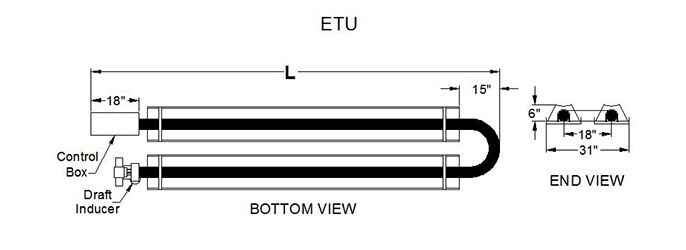
| GAS TYPE | BURNER PRESSURE | MINIMUM SUPPLY PRESSURE | MAXIMUM SUPPLY PRESSURE | VOLTAGE | AMPS | IGNITION TYPE |
| ETS/U40-140 | ||||||
| NATURAL | 3.5″W.C. | 5″W.C. | 14″W.C. | 120VAC | 2.6 | DIRECT SPARK |
| PROPANE | 10″W.C. | 11″W.C. | 14″W.C. | 60HZ | ||
| ETS/U 150-250 | ||||||
| NATURAL | 3.5″W.C. | 7″W.C. | 14″W.C. | 120VAC | 2.6 | DIRECT SPARK |
| PROPANE | 10″W.C. | 12″W.C. | 14″W.C. | 60HZ | ||
NOTE: For all installations higher than 2000 ft. above sea level please consult the factory regarding recommended derating of heaters.
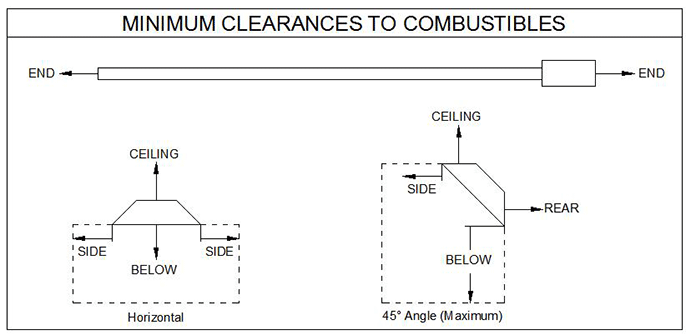
| MODEL | SIDE | CEILING* | BELOW** | ENDS | FRONT | REAR(45°angle) |
| LTS40 | 24″ | 6″ | 40″ | 15″ | 40″ | 12″ |
| LTS50 | 24″ | 6″ | 40″ | 15″ | 40″ | 12″ |
| LTS60 | 24″ | 6″ | 60″ | 15″ | 52″ | 12″ |
| LTS75 | 24″ | 6″ | 60″ | 15″ | 52″ | 12″ |
| LTS80 | 26″ | 6″ | 66″ | 15″ | 52″ | 12″ |
| LTS90 | 26″ | 6″ | 66″ | 15″ | 52″ | 12″ |
| LTS100 | 28″ | 6″ | 76″ | 15″ | 60″ | 12″ |
| LTS110 | 32″ | 6″ | 82″ | 20″ | 66″ | 12″ |
| LTS120 | 32″ | 6″ | 82″ | 20″ | 66″ | 12″ |
| LTS125 | 32″ | 6″ | 82″ | 20″ | 66″ | 12″ |
| LTS130 | 32″ | 6″ | 82″ | 20″ | 66″ | 12″ |
| LTS140 | 36″ | 6″ | 87″ | 20″ | 70″ | 12″ |
| LTS150 | 36″ | 6″ | 87″ | 20″ | 70″ | 12″ |
| LTS160 | 42″ | 6″ | 93″ | 20″ | 77″ | 12″ |
| LTS175 | 42″ | 6″ | 93″ | 20″ | 77″ | 12″ |
| LTS180 | 44″ | 6″ | 106″ | 20″ | 84″ | 12″ |
| LTS200 | 44″ | 6″ | 106″ | 20″ | 84″ | 12″ |
| LTS225 | 56″ | 6″ | 112″ | 20″ | 90″ | 18″ |
| LTS250 | 56″ | 6″ | 112″ | 20″ | 90″ | 18″ |
NOTE:The clearances specified above must be maintained to combustibles and other materials that may be damaged by temperatures 90°F above ambient temperature. Clearances to combustibles are posted on the reflector near the control end of the heater. In locations used for storage of combustible materials where they may be stacked below the heater, NFPA 54 requires that the installer must post signs that will “specify the maximum permissible stacking height to maintain the required clearances from the heater to combustibles”.
* When used indirect vented, clearance to CEILING must be: 12″ for ETS/U (40-75) and 18″ for ETS/U (80-250). If optional corner and u-bend reflectors are not used, the clearance must be 18″.
** Maximum clearance below reduces by 50% once you are 25ft. downstream from the burner box. Note: Consult Factory if reduced clearances are required
VENTING REQUIREMENTS
Heaters can be common vented, vented or indirect vented. A vented installation must be vented outside the building with a flue pipe. An indirect vented installation requires a minimum ventilation flow of 4 CFM per 1000 BTU/hour of total installed heater capacity on natural gas by either gravity or power ventilation (4.18 CFM per 1000 BTU/hour on propane).
INSTALLATION REQUIREMENTS
Installation and service must be performed by a licensed contractor. The installation must conform to written Instalation & Operating Instructions and local codes. In the absence of local codes, the installation must conform with the National Fuel Gas code, ANSI Z223.1 (latest edition also known as NFPA54) or GCA B149 (latest edition) installation codes. These codes are available from the National Fire Protection Association, Inc., Batterymarch Park, Quincy, MA 02269 or the Canadian Gas Association, 55 Scarsdale Road, Toronto, Ontario M3B 2R3, CANADA.
FOR YOUR SAFETY
Operate infrared heaters with proper care and observe all safety precautions. Carefully follow printed installation, operating and cleaning instructions furnished with the heater. Do not store gasoline or combustible products in the vicinity of the heater. Do not touch the heater or the tubes while the heater is in operation. Adequate ventilation must always be provided in accordance with codes.
Deflector Kit
The Deflector Kit (Part # 43482000) is used to reduce clearances to combustibles below the heater. Details on Deflector Kit (PDF)
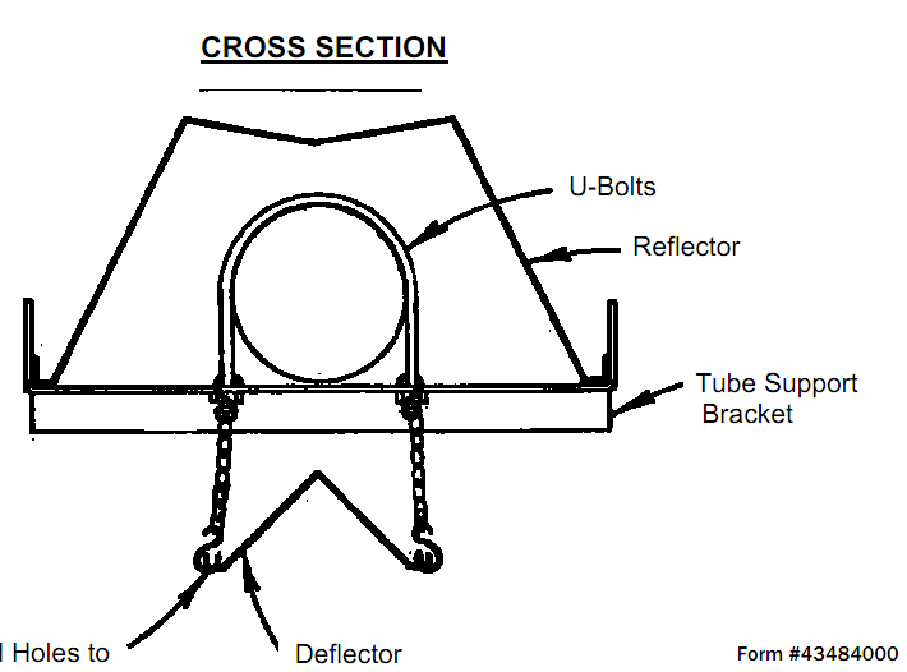
Side Reflector Kits
Side Reflector kits can be used to reduce the clearences to combustibles to the side of the heater. They are available as single side reflector or 2-side reflector.
Side Reflector Installation info (PDF)
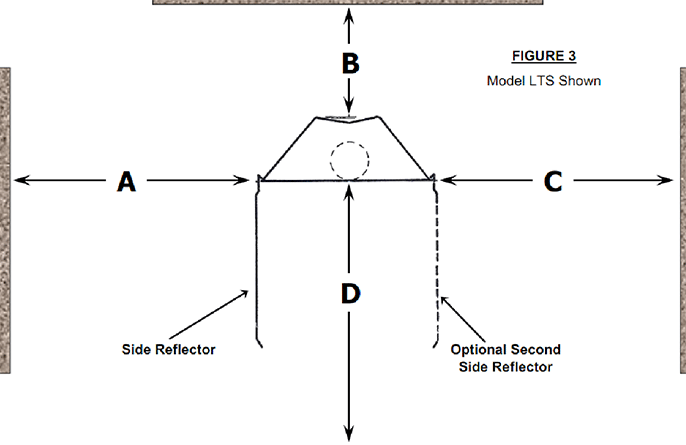
Decorative Grille Kits
The heaters can be installed over non-combustible suspended ceilings with the use of aluminum decorative grilles. Decorative Grille Installation Instructions (PDF)
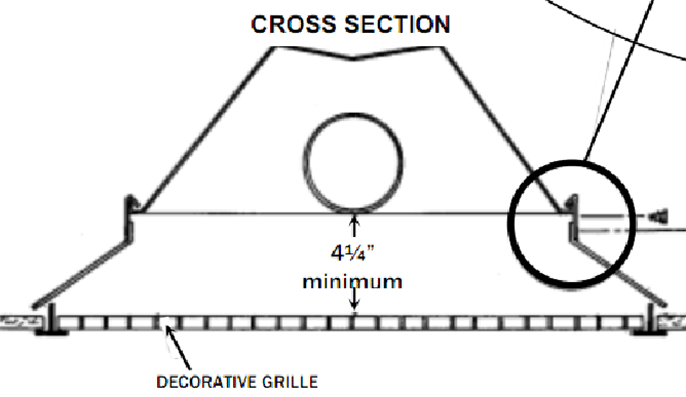
90 Degree Elbow Package Kit
Heaters can be installed in various configurations- L Shape, Z Shape etc. using 90 degree elbows. See I & O’s for typical layouts. 90 Degree Elbow Accessory Package Kit (Part #43208010) comes with the required couplings and hardware. ETS Series Only.
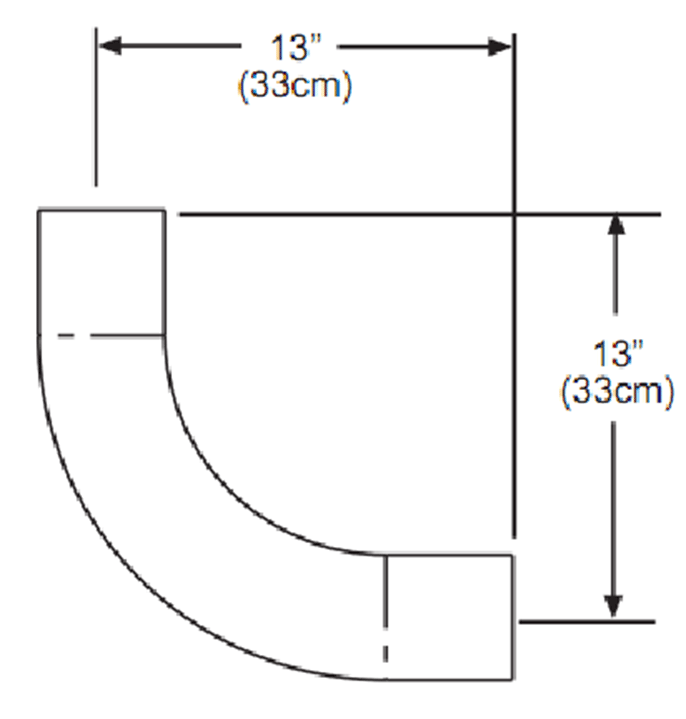
Corner Reflector Package Kit
Used with 90 Degree Elbow Package Kit. It maintains the clearences to combustibles above the reflector and maximizes the emitter tube temperature. The Corner Reflector Package Kit (part # 4334200) can be used only when the long axis of the heater is level and mounted in a horizontal position. ETS Series Only.
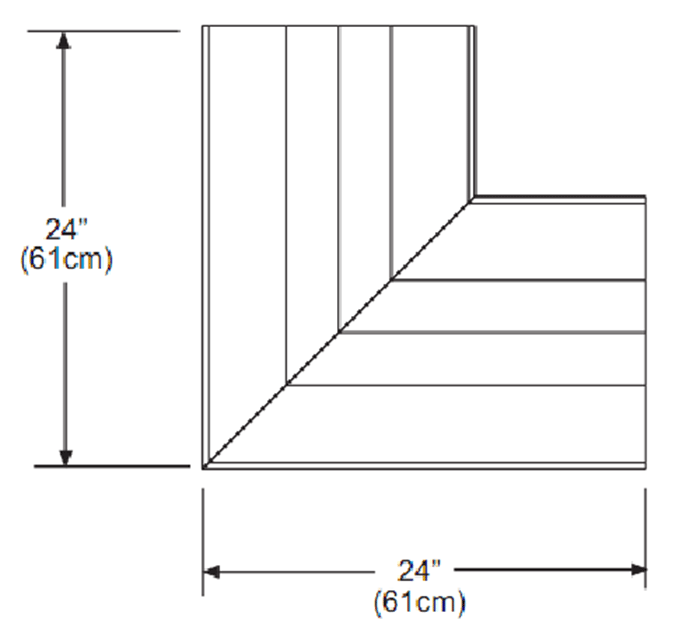
U-Bend Reflector Package Kit
Used with ETU series to maximize emitter tube temperatures and to reduce the clearences above thereflector. U-Bend Reflector Package Kit (Part #43488000) comes with the required couplings and hardware. ETU Series Only.
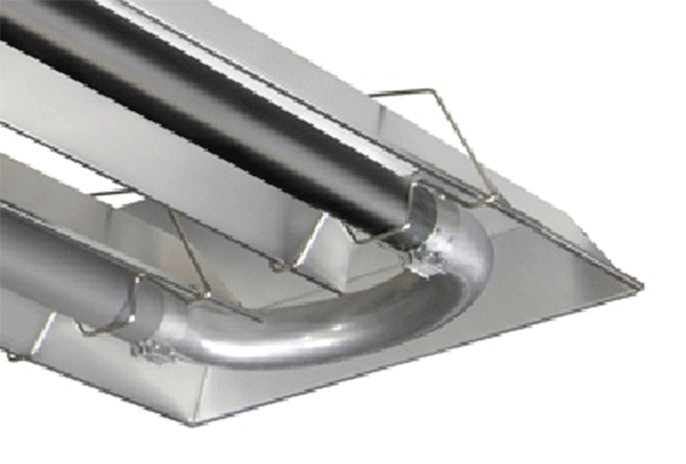
Tube Heater Accessories
Accessories for common tube heater installations include vent caps, combustion air termination caps, thermostats, programmable digital thermostats, 24V Thermostats relay kits, Thermostat enclosure, Chain Kits, Second Stage Line Regulators, and manual cutoff valves. To learn more click Tube Heater Accessories (PDF).
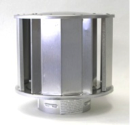
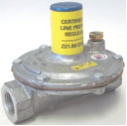
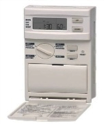
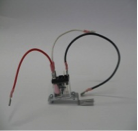

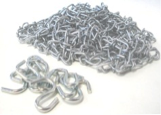
Troubleshooting
Troubleshooting Flowcharts are located toward the end of each products I & O pdf.

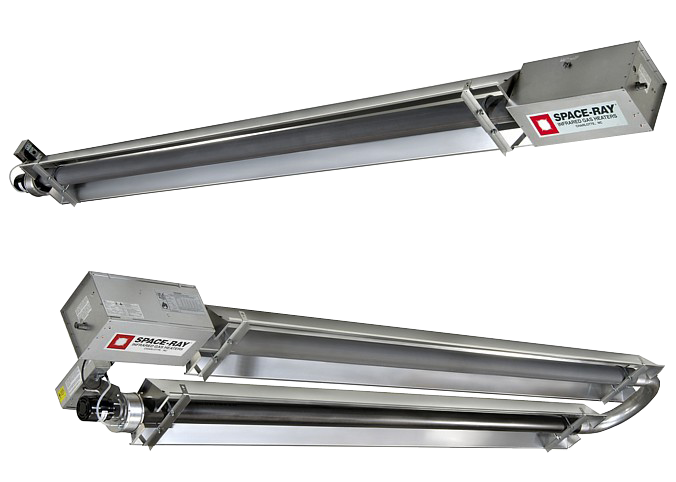
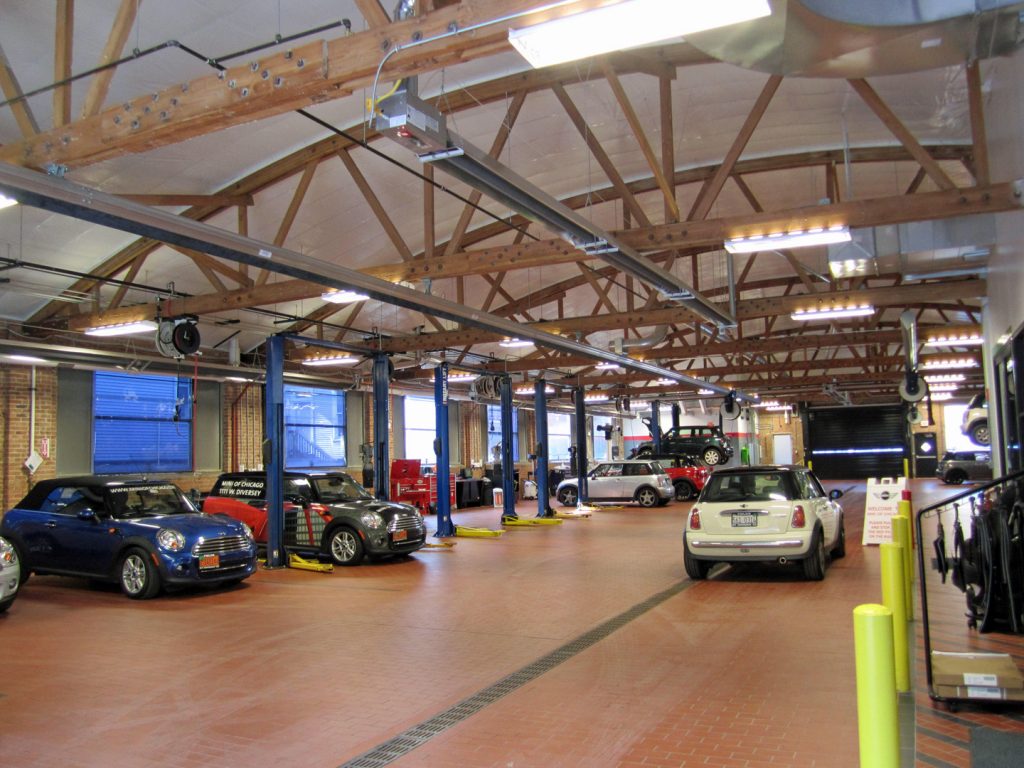

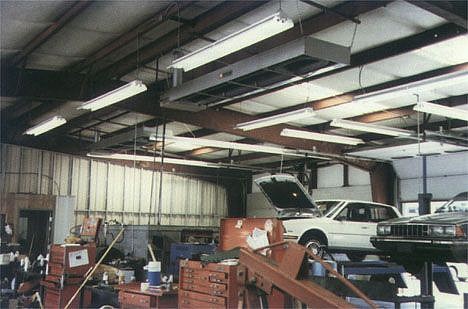
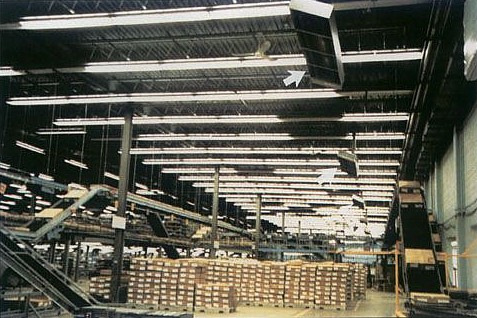
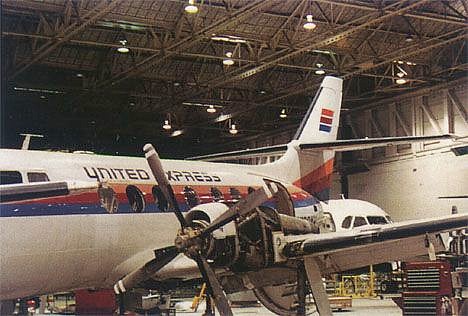
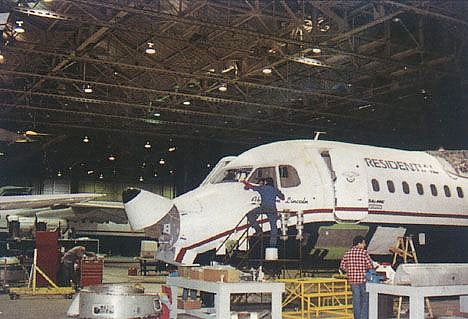
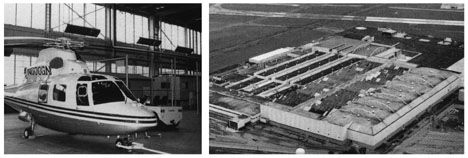
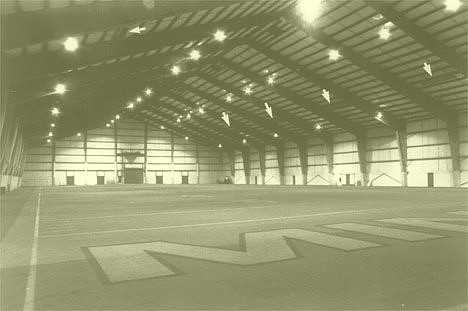
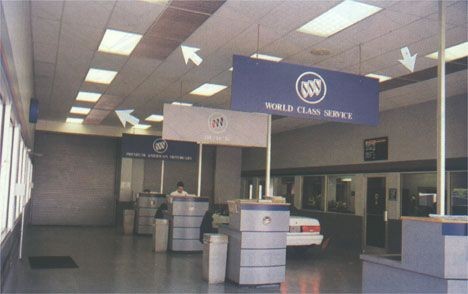
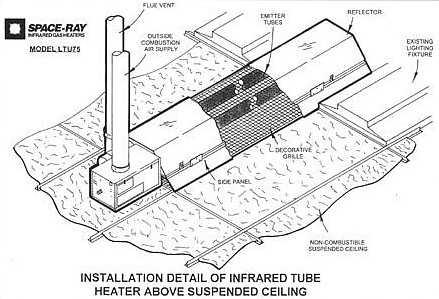
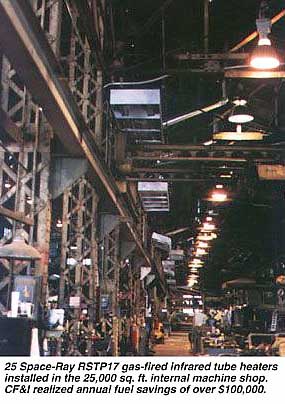 It has two 150-ton electric furnaces and two continuous casters. There are also rail, bar, rod, wire, seamless tube and other mills, a casting foundry and various auxiliary operations.
It has two 150-ton electric furnaces and two continuous casters. There are also rail, bar, rod, wire, seamless tube and other mills, a casting foundry and various auxiliary operations.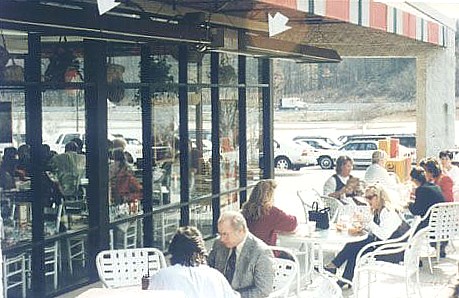
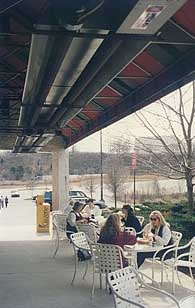 Now when it's cool outside and the heaters are on, often times we fill up the patio before the inside area which seats 75," he said. "Customers are amazed at how warm they are under the heaters when it's 30° Fahrenheit outside
Now when it's cool outside and the heaters are on, often times we fill up the patio before the inside area which seats 75," he said. "Customers are amazed at how warm they are under the heaters when it's 30° Fahrenheit outside